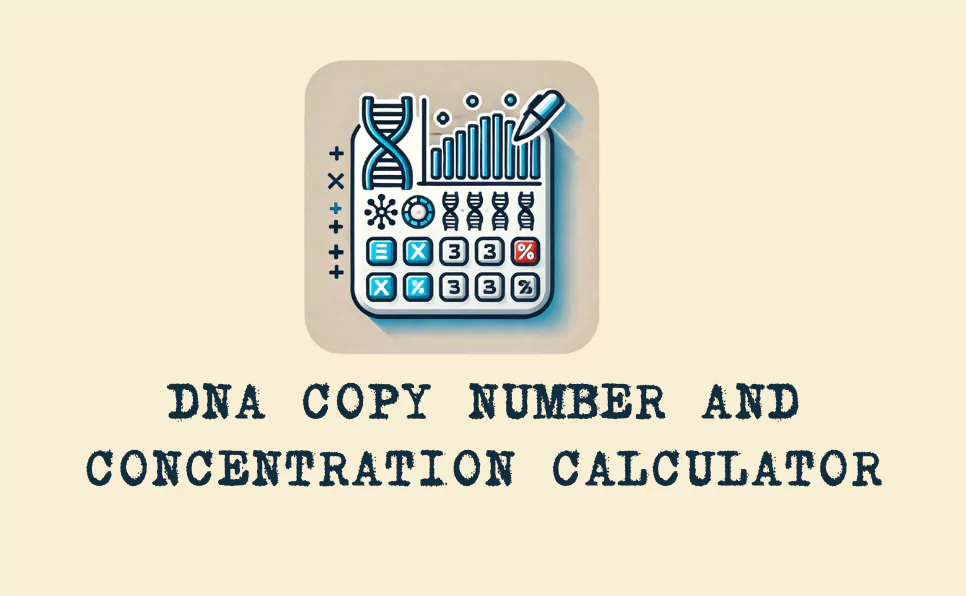The Reaction Estimator Calculator is a tool designed to help you determine the potential number of reactions you can perform with a given amount of oligonucleotide (oligo).
Reaction Estimator
The Reaction Estimator Calculator is designed to help you determine the potential number of reactions you can perform with a given amount of oligonucleotide. Simply input your reaction conditions to get an estimate.
Important note
This calculator provides an estimation based on ideal conditions and does not account for potential losses during pipetting or other experimental procedures. As a result, the actual number of reactions you can perform may be lower than the calculated value. Always consider practical laboratory conditions and use this tool as a guideline rather than an absolute measure.
This calculator simplifies the process of estimating the number of reactions by taking into account the desired reaction concentration, the volume of each reaction, and the total amount of oligo available. This tool is especially useful in planning experiments and ensuring that you have enough oligo to complete your work.
Principles
Estimating the number of reactions that can be performed with a specific amount of oligo involves understanding the relationship between concentration, volume, and amount. The key principle behind this calculator is based on the equation:
N = m / (C × V)
Where:
- N is the number of reactions.
- m is the total amount of oligo available.
- C is the desired concentration of the oligo in each reaction.
- V is the volume of each reaction.
Uses
- Planning Experiments: This calculator helps researchers plan their experiments by estimating the number of reactions that can be performed with the available oligo.
- Resource Management: Ensuring that you have enough oligo to complete all planned reactions can save time and resources, avoiding interruptions in your workflow.
- Efficiency: By providing a clear estimate of reaction counts, this tool helps in optimizing the use of oligo and minimizes waste.
How to Use the Calculator
- Desired Reaction Oligo Concentration: Enter the concentration of oligo you want in each reaction and select the appropriate unit (Micromolar, Nanomolar, Picomolar).
- qPCR Reaction Volume: Enter the volume of each reaction and select the appropriate unit (Microliters).
- Nanomoles Delivered: Enter the total amount of oligo you have available for the reactions and select the unit (Nanomoles).
- Calculate: Click the ‘Calculate’ button to determine the potential number of reactions you can perform with the available oligo.
Example Calculation
Suppose you have 2 nmol of oligo and you want to prepare qPCR reactions with a concentration of 500 nM and a volume of 25 µL each:
- Desired Reaction Oligo Concentration: 500 nM
- qPCR Reaction Volume: 25 µL
- Nanomoles Delivered: 2 nmol
Using the reaction estimator equation:
Convert all units to consistent units (moles and liters):
m = 2 nmol = 2 × 10-9 mol
C = 500 nM = 500 × 10-9 mol/L
V = 25 µL = 25 × 10-6 L
N = (2 × 10-9 mol) / ((500 × 10-9 mol/L) × (25 × 10-6 L))
N = (2 × 10-9) / (500 × 25 × 10-15)
N = (2 × 10-9) / (12.5 × 10-12)
N = 160
So, you can perform 160 reactions with the given amount of oligo under these conditions.
In short
The Reaction Estimator Calculator is a straightforward tool for planning and optimizing experiments involving oligonucleotides. By understanding and utilizing the principles and equations, researchers can ensure they have sufficient resources to carry out their experiments effectively.
This calculator provides an estimation based on ideal conditions and does not account for potential losses during pipetting or other experimental procedures. As a result, the actual number of reactions you can perform may be lower than the calculated value. Always consider practical laboratory conditions and use this tool as a guideline rather than an absolute measure.

Dr. Sumeet is a seasoned geneticist turned wellness educator and successful financial blogger. GenesWellness.com, leverages his rich academic background and passion for sharing knowledge online to demystify the role of genetics in wellness. His work is globally published and he is quoted on top health platforms like Medical News Today, Healthline, MDLinx, Verywell Mind, NCOA, and more. Using his unique mix of genetics expertise and digital fluency, Dr. Sumeet inspires readers toward healthier, more informed lifestyles.




